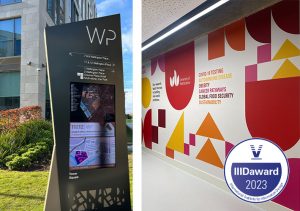Why we need Blue Sky thinking and user-friendly digital products
We love to think outside the box. In our Placemarque Lab we grapple with the big questions and challenges that are impacting society both now and in the future. Climate change, of course. But also the future role of town centres and the workplace, and the impact of place on health, amongst others. We like tinkering with new technologies and coming up with innovative ways to meet future challenges head on.
The power of Blue Sky thinking
It’s no doubt that big thinkers bring a new perspective. When they say “what if…” they can turn hopeless situations around, changing problems into opportunities.
Over history society has seen the transformative power of blue sky thinking.
Mathematician Ada Lovelace combined her love of mathematics with her inventive mind when, inspired by Charles Babbage’s “analytical engine”, she developed the concept of computer coding.
100 years later, Alan Turing could see the future of computing, when he invented the “Turing Machine”, considered to be the precursor to the modern computer processor.
More recently, we’ve seen the development of facial recognition. Now a commonplace security measure on smartphones, it wasn’t long ago that we only knew it from science fiction. Who can remember the 2002 film Minority Report, where Tom Cruise’s character walks past adverts tailored specifically to him, through the power of facial recognition? What started as cutting edge “what if” thinking has developed over time into a real, usable, digital tool that has improved personal security.
In wayfinding, too, digital technology is pushing the boundaries of innovation. Augmented reality – enhanced mapping overlaid onto a real-world setting – allows the user to navigate real places by following virtual arrows that seem to appear on the floor ahead.
The importance of keeping focussed on the user
Sounds good, in theory. But as with any new technology the reality can be confusing and, therefore, unusable.
That’s why innovation must go hand-in-hand with its trusty friend, user experience.
It may not feature in the next Hollywood blockbuster, but if we forget to consider user experience our wayfinding solution may well fall flat. Digital tools need to be universally accessible; anyone should be able to use them, regardless of their tech literacy.
Augmented reality is an exciting concept and undoubtedly will become commonplace in wayfinding in the future. But the fact is that for many wayfinding strategies, the technology is still some way off being an accessible solution for people of all tech abilities, not just the tech-savvy.
The perfect match: big thinking plus user experience
Every technological innovation starts from someone pushing at boundaries, challenging the status quo and asking big questions. But for every big thinker we also need a details person who turns inspiring concepts into real, usable digital products. That’s why we set up the Placemarque Lab. It’s where we think big and also where we think practical.
There will always be a time lag between the moment a new concept is first conceived and the point at which it becomes a commonplace tool that anyone can use with ease. And that’s OK.
On any project we are commissioned on, we make sure we carefully consider whether a new digital technology is the right solution for the place.
Swansea’s interactive digital map
Digital wayfinding solutions can often come in the form of interactive digital monoliths, such as at Wellington Place, Leeds and Eastbank, Stratford. Turning the static into the dynamic offers flexibility, as well as conveying something about a place’s character.

In Swansea, however, we’ve developed a digital cycle map which users can access online via their smartphone. Rather than taking the opportunity to showcase the latest in digital innovation, we chose to make sure the solution is easy for everyone to use and interact with.
Swansea’s wayfinding strategy includes an online mapping system that identifies the local cycle routes, as well as other cycle facilities like cycle parking and cycle repair stands. It includes pop-up information windows that give you more information on the individual parking facilities available. The map also includes a search bar so you can find cycle parking locations near to your destination.
Free to use, its aim is to make it easy for locals and visitors to choose cycling by highlighting the extent of free cycle parking facilities within the Swansea area.
Swansea’s digital map is functional yet beautiful. By removing obstacles to active sustainable transport it’s an effective way to reduce reliance on the car. And because the map can be accessed on users’ phones, we’re helping visitors feel in control of their journey and encouraging them to explore a little further and stay a little longer.
Now we just need to rally the big thinkers to come up with the next digital innovation that will enable users to look at the map whilst cycling along!
Call us today about your next wayfinding project to discuss whether a digital wayfinding product could be the right solution for your place.




